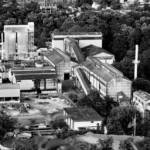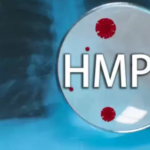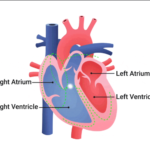To help you cope with this disease, be aware of the fundamentals of symptoms, diagnosis, and treatment of Heart Arrhythmias
An irregular heartbeat, or one that beats more or fewer times than usual, is known as a heart arrhythmia. It’s possible that you have erratic heartbeats, but they’re harmless variations.
On the other hand, a few arrhythmias raise the possibility of cardiovascular diseases, including heart failure or stroke. A small percentage of arrhythmias pose a risk to life if left undiagnosed or untreated. Heart implant devices may be necessary for patients with arrhythmias who are at the highest risk. Nonetheless, the majority of arrhythmias can be controlled with drugs or catheter insertions. You can have a normal life with appropriate care and regular safety measures.
Also read-Enlarged Heart : A Patient’s Guide To An Enlarged Heart And Its Symptoms

What are heart arrhythmias?
Heart arrhythmias are usually grouped in two ways. The first is by heartbeat frequency. A slow heart rate is called bradyarrhythmia. In general, a heart rate under 60 beats per minute is considered slow. A fast heart rate is called tachyarrhythmia—in general, above 100 beats per minute. Arrhythmias can also be classified by the location in the heart where they originate. Supraventricular arrhythmias occur in the upper heart chambers, or atria, or in other cardiac structures.
There are typically two classifications for heart arrhythmias. First, by frequency of heartbeat. A bradyarrhythmia is a sluggish heartbeat. A heart rate of less than 60 beats per minute is often regarded as sluggish. A tachyarrhythmia is a rapid heart rate, generally defined as more than 100 beats per minute. Another way to categorize arrhythmias is by the part of the heart from which they arise. The atria, or upper heart chambers, as well as other cardiac structures, are the sites of supraventricular arrhythmias.

Signs and symptoms of Heart Arrhythmias
Depending on your arrhythmia type or heart risk, you may experience the following symptoms:
Slow Heart Rhythm
- Fatigue.
- Syncope (fainting).
- Dizziness.
Fast Heart Rhythm
- Feeling of a fast-beating or pounding heart.
- Lightheadedness or syncope.
- Shortness of breath on exertion.
- Anxiety sensation.
- Chest pain.

Causes of Heart Arrhythmias
Arrhythmias can result from cardiac or vascular illnesses such as heart valve problems, excessive blood pressure, cardiomyopathy, or alterations in the heart’s muscle. Childhood or adult congenital cardiac disorders, including birth defects such as the tetralogy of Fallot or atrial septal defect, can cause arrhythmias. One of the more severe forms of rapid arrhythmias can result from scar tissue in the heart, for example, following a heart attack. According to Dr. Vivek Reddy, who oversees the cardiac arrhythmia department at Mount Sinai Health System in New York City, “tachycardia circuits can develop.” “Ventricular tachycardia is dangerous; it’s actually the rhythm that leads to most cardiac arrests.”

Diagnosis of Heart Arrhythmias
To make an arrhythmia diagnosis, cardiologists ask patients about their medical history, perform a physical exam and order certain tests based on specific symptoms.

Treatments of Heart Arrhythmias
If you have an arrhythmia that requires treatment, your cardiologist will explain your options and describe the risks and benefits of each one. Depending on your specific diagnosis, choices may include medications, catheter-based procedures or implanted heart devices such as pacemakers and internal defibrillators.

Also read-Miracle Cures: A New Era Of Unproven Medical Treatments Is Being Usued by Online Conspiracy Theories
images source: Google
Disclaimer: The opinions and suggestions expressed in this article are solely those of the individual analysts. These are not the opinions of HNN. For more, please consult with your doctor




































